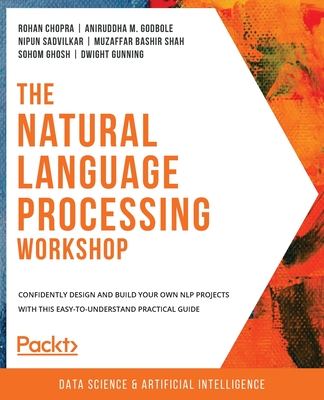SAS Text Miner
暫譯: SAS 文字挖掘工具
Martha Abell
- 出版商: CreateSpace Independ
- 出版日期: 2014-09-06
- 售價: $950
- 貴賓價: 9.5 折 $903
- 語言: 英文
- 頁數: 108
- 裝訂: Paperback
- ISBN: 1501080954
- ISBN-13: 9781501080951
無法訂購
相關主題
商品描述
Text mining uncovers the underlying themes or concepts that are contained in large document collections. Text mining applications have two phases: exploring the textual data for its content and then using discovered information to improve the existing processes. Both are important and can be referred to as descriptive mining and predictive mining. Descriptive mining involves discovering the themes and concepts that exist in a textual collection. For example, many companies collect customers' comments from sources that include the Web, e-mail, and contact centers. Mining the textual comments includes providing detailed information about the terms, phrases, and other entities in the textual collection; clustering the documents into meaningful groups; and reporting the concepts that are discovered in the clusters. Results from descriptive mining enable you to better understand the textual collection. Predictive mining involves classifying the documents into categories and using the information that is implicit in the text for decision making. For example, you might want to identify the customers who ask standard questions so that they receive an automated answer. In addition, you might want to predict whether a customer is likely to buy again, or even if you should spend more effort to keep the customer. Predictive modeling involves examining past data to predict results. Consider that you have a customer data set that contains information about past buying behaviors, along with customer comments. You could build a predictive model that can be used to score new customers—that is, to analyze new customers based on the data from past customers. For example, if you are a researcher for a pharmaceutical company, you know that hand-coding adverse reactions from doctors' reports in a clinical study is a laborious, error-prone job. Instead, you could create a model by using all your historical textual data, noting which doctors' reports correspond to which adverse reactions. When the model is constructed, processing the textual data can be done automatically by scoring new records that come in. You would just have to examine the "hard-to-classify" examples, and let the computer handle the rest.
商品描述(中文翻譯)
文本挖掘揭示了大型文檔集合中所包含的潛在主題或概念。文本挖掘應用有兩個階段:探索文本數據的內容,然後利用發現的信息來改善現有的流程。這兩者都很重要,可以分別稱為描述性挖掘和預測性挖掘。描述性挖掘涉及發現文本集合中存在的主題和概念。例如,許多公司從網路、電子郵件和聯絡中心等來源收集客戶的評論。挖掘文本評論包括提供有關文本集合中術語、短語和其他實體的詳細信息;將文檔聚類成有意義的組;並報告在這些聚類中發現的概念。描述性挖掘的結果使您能夠更好地理解文本集合。
預測性挖掘涉及將文檔分類到不同類別中,並利用文本中隱含的信息進行決策。例如,您可能希望識別那些提出標準問題的客戶,以便他們能夠獲得自動回覆。此外,您可能想預測客戶是否可能再次購買,或者是否應該花更多的精力來維持客戶關係。
預測建模涉及檢查過去的數據以預測結果。假設您擁有一個客戶數據集,其中包含有關過去購買行為的信息,以及客戶評論。您可以建立一個預測模型,用於評分新客戶,即根據過去客戶的數據分析新客戶。例如,如果您是製藥公司的研究人員,您知道從臨床研究中的醫生報告中手動編碼不良反應是一項繁瑣且容易出錯的工作。相反,您可以通過使用所有歷史文本數據來創建一個模型,記錄哪些醫生報告對應於哪些不良反應。當模型構建完成後,處理文本數據可以通過對新進記錄進行評分來自動完成。您只需檢查那些「難以分類」的例子,讓計算機處理其餘的部分。











